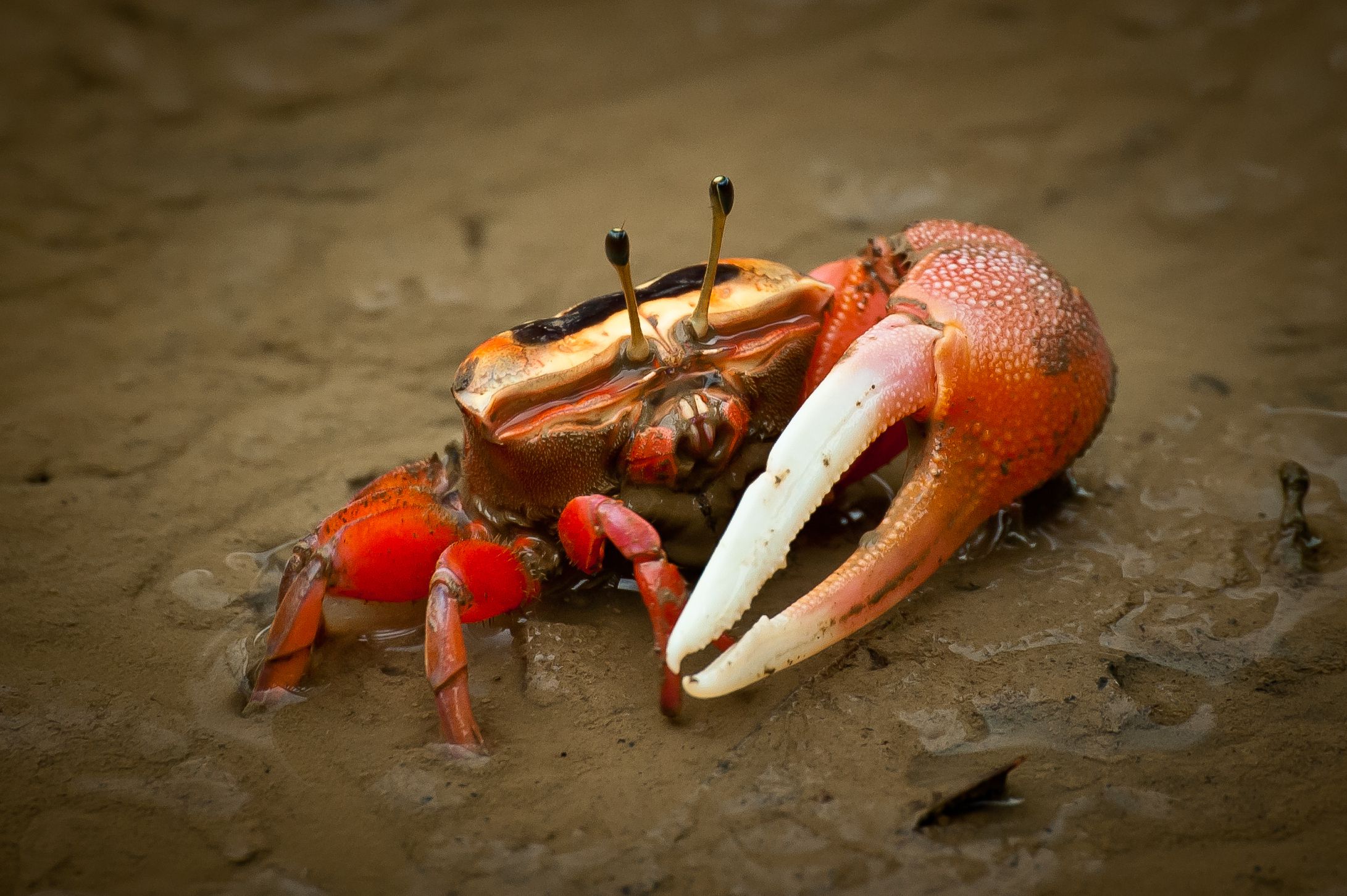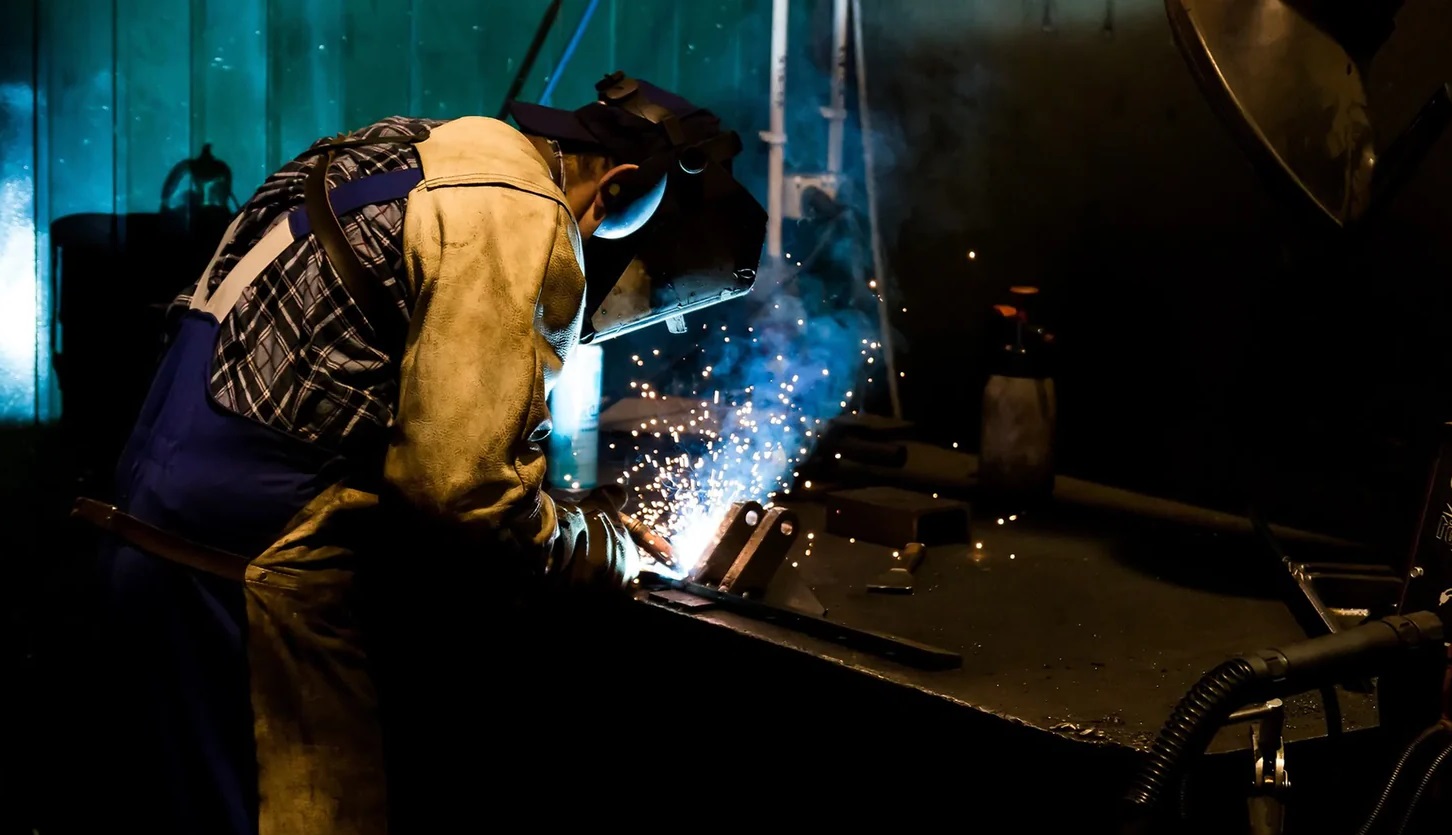
Fiddler crabs, with their distinctive oversized claws and fascinating behavior, are fascinating creatures that can be found in intertidal zones around the world. These small crabs, known for their rapid burrowing and intricate courtship rituals, belong to the family Ocypodidae and are typically found in sandy or muddy habitats. In this article, we will delve into 15 intriguing facts about fiddler crabs that will give you a deeper understanding of these fascinating creatures. From their unique anatomy and feeding habits to their social structure and the role of their oversized claw, get ready to explore the world of fiddler crabs like never before. So, let’s dive in and uncover some intriguing facts about these captivating crustaceans!
Key Takeaways:
- Fiddler crabs have a unique oversized claw, specialized eyes, and impressive burrow-building skills. They play a crucial role in coastal ecosystems and have a fascinating social structure.
- Male fiddler crabs communicate through waving and drumming, using their larger claw for courtship and defense. They have a keen sense of smell and are excellent swimmers.
Fiddler crabs are small crustaceans.
Fiddler crabs belong to the family Ocypodidae and are characterized by their small size and distinctive oversized claw.
The males have one significantly larger claw.
In fiddler crabs, the males have one claw that is much larger than the other, which they use for communication, courtship, and defense.
The larger claw can be up to twice the size of their body.
When fully grown, the larger claw of a male fiddler crab can be up to half the size of its body, making it an impressive and prominent feature.
Fiddler crabs are excellent builders.
These crabs are known for their impressive burrow-building skills. They dig complex tunnels in the sand or mud, creating homes and protection.
They use their smaller claw for feeding.
The smaller claw of the fiddler crab is used for activities such as feeding and grooming, while the larger claw is primarily used for communication and defense.
Fiddler crabs have highly specialized eyes.
Their eyes are located on stalks, allowing them to have a 360-degree field of vision, which helps in detecting predators and potential mates.
Fiddler crabs are omnivorous.
They have a varied diet, feeding on algae, detritus, small invertebrates, and even plant matter.
Fiddler crabs communicate through waving and drumming.
Male fiddler crabs communicate with each other by waving their larger claw in a specific pattern and producing rhythmic sounds known as drumming.
They have a keen sense of smell.
These crabs use their sense of smell to locate food, detect potential mates, and navigate their surroundings.
Fiddler crabs play an important role in coastal ecosystems.
They help to aerate and mix soil, promote the growth of saltmarsh plants, and serve as a crucial food source for other animals in the ecosystem.
They undergo molting to grow.
Like other crustaceans, fiddler crabs periodically shed their exoskeletons to allow for growth.
Fiddler crabs are excellent swimmers.
When necessary, these crabs can swim using their abdominal paddles and even breathe underwater for a short period of time.
Different species of fiddler crabs have different colorations.
While many fiddler crabs are typically brown or gray, some species exhibit vibrant colors, such as blue, red, and even yellow.
Fiddler crabs have a hierarchical social structure.
Males establish territories and engage in competitive behaviors to attract females and defend their space.
Fiddler crabs have a lifespan of up to two years.
In their natural habitats, these crabs typically live for around one to two years, although lifespan can vary depending on multiple factors.
These 15 facts about fiddler crabs shed light on the fascinating world of these small crustaceans. From their unique oversized claw to their impressive burrow-building skills, fiddler crabs have a lot to offer in terms of their biology and behavior. Whether it’s their communication techniques, specialized eyes, or their importance in coastal ecosystems, fiddler crabs are a true marvel of nature.
Understanding these facts about fiddler crabs also helps raise awareness about the importance of preserving their habitats and ensuring their well-being for future generations.
Conclusion
In this article, we’ve explored 15 fascinating facts about fiddler crabs. These small but remarkable creatures are highly adaptable and have unique traits that make them stand out in the animal kingdom. From their distinctive oversized claws to their intriguing courtship dances, fiddler crabs truly are a marvel of nature.We’ve learned about their burrowing habits, their feeding behaviors, and their ability to communicate through chemical signals. We’ve also discovered how they play a crucial role in maintaining the health of coastal ecosystems.Whether you’re a marine enthusiast or simply interested in learning more about the wonders of the natural world, fiddler crabs provide a captivating glimpse into the fascinating lives of these incredible creatures.
FAQs
Q: How big do fiddler crabs get?
A: Male fiddler crabs can grow up to 2 inches in size, while females tend to be smaller, reaching a maximum size of around 1.5 inches.
Q: Are fiddler crabs aggressive?
A: Fiddler crabs are generally not aggressive towards humans. However, male fiddler crabs can be territorial and may engage in fights with other males to defend their burrows.
Q: Can fiddler crabs swim?
A: Yes, fiddler crabs are capable of swimming. They use their back legs to paddle through the water, although they are primarily adapted for life on land.
Q: Do fiddler crabs make good pets?
A: Fiddler crabs can make interesting pets for those who are able to provide them with a suitable environment. They require a brackish water tank setup with sandy substrate and plenty of hiding places.
Q: How long do fiddler crabs live?
A: The lifespan of fiddler crabs varies depending on the species, but on average, they live for about 2-3 years.
Q: Are fiddler crabs harmful to humans?
A: Fiddler crabs are not harmful to humans. The males’ large claws may look intimidating, but they are primarily used for courtship displays and for defense against other males.
Q: What do fiddler crabs eat?
A: Fiddler crabs are omnivorous and feed on a variety of foods, including algae, detritus, small invertebrates, and organic matter found in the mud and sand.
Q: How do fiddler crabs communicate?
A: Fiddler crabs communicate through chemical signals, using chemicals called pheromones to attract mates and establish their territories.
Q: Where can fiddler crabs be found?
A: Fiddler crabs are commonly found in intertidal areas, such as salt marshes, mudflats, and mangrove swamps, along the coastlines of tropical and subtropical regions.
Q: Are fiddler crabs important to the ecosystem?
A: Yes, fiddler crabs play a crucial role in their ecosystems. They help to aerate the sediment, recycle organic matter, and provide a food source for many other coastal creatures.
Fiddler crabs, with their unique characteristics and behaviors, are just one example of the fascinating world of crustaceans. Dive deeper into the realm of these incredible creatures by exploring more crustaceans facts. Uncover the mysteries behind animal behavior and learn how fiddler crabs and other species interact with their environment. Discover the importance of wetland conservation efforts in preserving the habitats of fiddler crabs and countless other species that depend on these vital ecosystems.
Was this page helpful?
Our commitment to delivering trustworthy and engaging content is at the heart of what we do. Each fact on our site is contributed by real users like you, bringing a wealth of diverse insights and information. To ensure the highest standards of accuracy and reliability, our dedicated editors meticulously review each submission. This process guarantees that the facts we share are not only fascinating but also credible. Trust in our commitment to quality and authenticity as you explore and learn with us.


